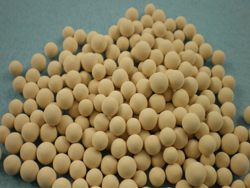What are drying agents?
Drying agents are useful aids for a wide variety of purposes, and industry they are commonly seen in industrial applications as well as everyday packaging. With the ability to attract and bind to water molecules, drying agents are absolutely essential aids to have in home and industry.What are the qualities of drying agents?
Drying agents or desiccants are hygroscopic substances that work to induce or sustain a condition of dryness or desiccation. These substances are commonly used to absorb moisture in the air in the local vicinity, which is typically a sealed container.What are the forms of drying agents?
In its most common form as silica gel packets, drying agents commonly come in solid form. These substances work by way of absorption or adsorption processes, or they may perform the two functions in combination. For more specialized drying purposes, drying agents may come in liquid or gaseous form. These types of drying agents work through a chemical bonding process in which the water molecules bind to the molecules of the drying agent.How do drying agents work?
The drying agents or desiccant packets commonly used in product packaging work to reduce the moisture and humidity levels in packages where the products contained may be damaged or have the quality deteriorated by the effects of moisture. For these applications, the most commonly used drying agents are:- silica gel
- activated charcoal
- calcium sulfate
- calcium chloride
What are oil drying agents?
Oil drying agents are substances that work to accelerate the process of hardening the oil in a catalyzing process. Called chemical crosslinking, this process causes the catalyst to react with the oil, in turn causing it to oxidize in the air. Some of the more commonly used oil drying agents are substances obtained from:- cobalt
- manganese
- iron
What are the types of oil drying agents?
Oil drying agents often come in the form of salts, although these are more accurately referred to as non-ionic coordination complexes that are more chemically similar to zinc acetate. Such catalysts were traditionally manufactured from lead carboxylates, although in recent years, a number of other materials have become more widely used, including cobalt and drying agents such as zirconium, zinc, calcium, and iron.Although most drying agents are colorless, drying agents made from cobalt tend to have a deep bluish purple hue. Drying agents made with iron for their part usually have a reddish orange hue. The colors of these drying agents make them suitable only for use with particular colors of paint.
One other type of oil drying agent is called “Japan drier”. This is actually the generic term for any oil drying agent that is intended for use with linseed oil and resin paint in order to speed up the drying process.
Back to Top
Drying Agent

Drying Agent Resources
Sponsored Links
